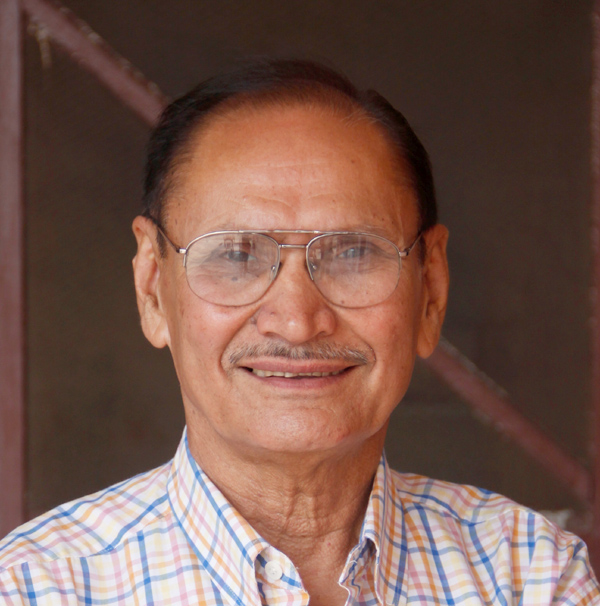Columns
Why Nepal won't see two million tourists in 2020
Revenue growth remains sluggish, but authorities are obsessed with the arrivals figure..jpg&w=900&height=601)
Chandra Prasad Bhattarai
Visit Nepal Year 2020 is approaching, and the government is preparing to celebrate it as a big event. It is fully focused on welcoming 2 million international tourists next year. The newly inducted Minister of Culture, Tourism and Civil Aviation, Yogesh Bhattarai, has expressed his wholehearted commitment to the success of the campaign. Apart from the ministry's 2019-20 annual development programme that has focused on realising the objectives of Visit Nepal Year 2020, the new minister has published a new list of things to do with this special year at its core. The ministry's entire team has a single goal in mind—bringing 2 million international tourists in 2020 at any cost. A Visit Nepal Year 2020 Secretariat has been established to give momentum to the campaign. The ministry itself and all its executing wings—Department of Tourism, Nepal Tourism Board and Visit Nepal Year 2020 Secretariat—are equipped with colourful action plans to achieve something great in the 365 days of the campaign.
The figure '2 million' was first started in 2009 in Tourism Vision 2020, a strategy document prepared and owned by the government to guide the development of the sector up to the year 2020. It provides a vision, overarching goals and a set of objectives, and strategies to achieve them. It aims to achieve 2 million international tourist arrivals annually by 2020 against the half-million mark in 2009. Nepal's subsequent Three-Year Interim Plan (2010-11 to 2012-13) endorsed the vision and its ambitious target to achieve a fourfold jump in arrivals in a decade.
The progress in international tourist arrivals since then gives a mixed picture. There was satisfactory growth during the period 2010-12. Unfortunately, not only did the growth rate not last long, but the absolute number of tourists also fell for three consecutive years from 2013 to 2015. The growth in the previous period can be attributed to increased government spending in 2011 and 2012 that were observed as Nepal Tourism Year and Visit Lumbini Year respectively. Although the next three-year period from 2016 to 2018 showed encouraging growth, sustainability is still a question in the absence of any concrete strategy. In 2018, tourist arrivals reached 1.17 million.
Since the government hierarchy is running after the number 2 million, it’s time we explore the logic behind this particular number. It is hard to find any scientific reasoning or basis or study or estimation that supports this numerical target. The only thing apparent is the love of the 2009 decision-makers for the number 20—the target of 20 lakh arrivals in 2020. On the other hand, the National Tourism Strategic Plan—a comprehensive 10-year plan lasting from 2016-25 prepared by national and international experts and owned by the government—has projected that only 1,339,000 tourists will arrive in Nepal in 2020. The annual projection made by the Strategic Plan shows that the 2 million mark will be met only in 2024. The Strategic Plan clearly states that given the low investment capacity, the growth rate required to achieve the ambitious target of 2 million is unrealistic in the prevailing scenario. The projections made by the Strategic Plan seem closer to reality.
Let us suppose for a while that even if the target is met, it does not necessarily mean that we will earn more? The average expense per visitor per day is the most common indicator of the income from the tourism industry. Their per day spending was already $27 as early as the Seventh Plan period (1985-90). It rose to $38 in 2011 and $44 in 2018. This minimal progress in over a quarter of a century cannot be taken as satisfactory. It clearly shows Nepal's low level of earning from tourism in recent years and suggests hosting high spending guests.
Nepal, until a few decades ago, was a favourite destination of high spending tourists. They obviously expect uniqueness, comfort, personal attention and superior service quality in return. The accommodation, food, transportation and safety standards should meet a certain standard when it comes to serving this category of guests. The product, service or destination should be appealing to them. The hosts are required to have a special approach in dealing with such customers and the culture of seeing things through the guest’s eyes.
Interestingly, some specific pocket areas in Nepal already used to host not only high-end but ultra-high-end guests in the past. The jungle lodges inside Chitwan National Park have been the preferred destination of such tourists since the 1970s. The service providers in Chitwan feel that with the closure of the lodges inside the jungle in 2012, such clientele has almost vanished. The construction in the late 1960s of the Hotel Everest View in Syangboche at an altitude of 3,880 metres above sea level within Sagarmatha National Park was another initiative to attract high-end tourists in those days. Thanks to the visionary team of Takashi Miyahara and his Nepali colleagues for the operation of this world-class hotel that gives guests a 360-degree view of the Himalaya.
To conclude, instead of merely counting the heads of guests, Nepal should target increased income from the tourism industry. There are 101 reasons how Nepal's nature, culture, and adventure can appeal to high-end tourists. A lot can be learnt from the experience of Bhutan in the neighbourhood. The only thing required is a clear understanding of this ground reality in the country's political leadership and policymakers who are currently in the 2020 marathon.
***
What do you think?
Dear reader, we’d like to hear from you. We regularly publish letters to the editor on contemporary issues or direct responses to something the Post has recently published. Please send your letters to [email protected] with "Letter to the Editor" in the subject line. Please include your name, location, and a contact address so one of our editors can reach out to you.




 18.12°C Kathmandu
18.12°C Kathmandu















